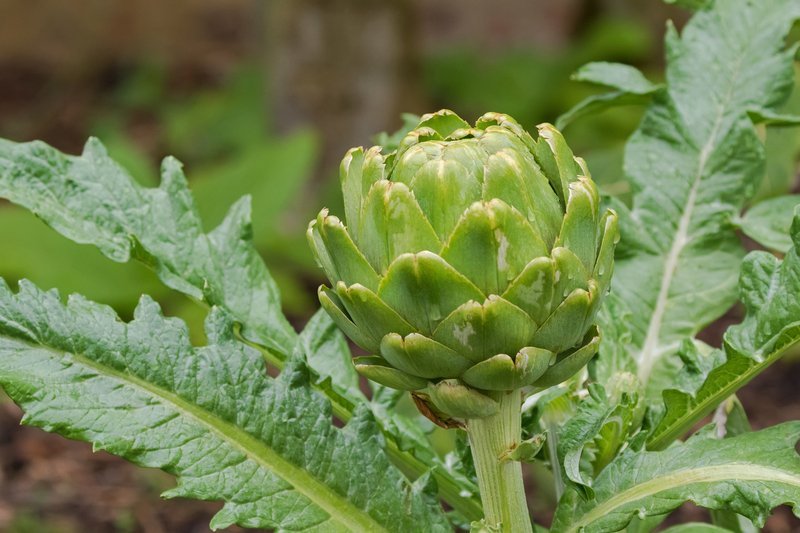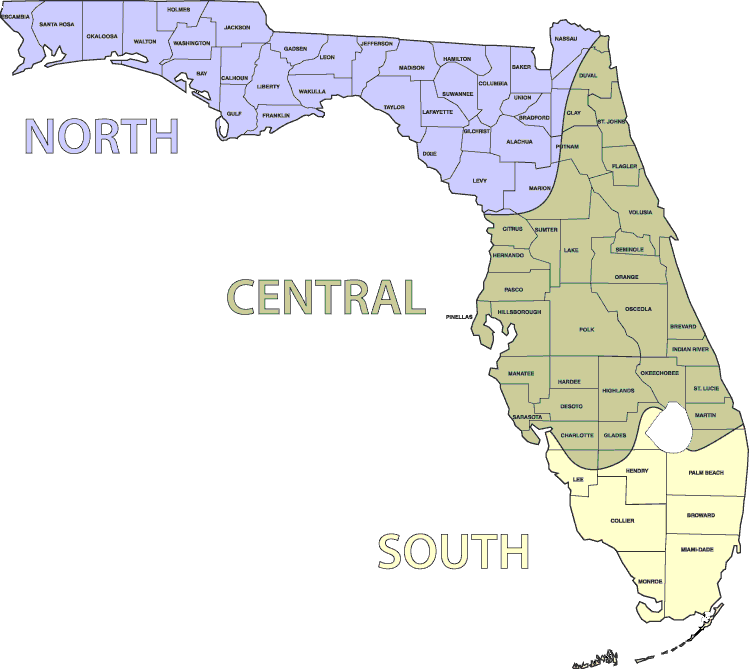Artichoke Varieties for Florida
Imagine a plant that brings both beauty and a touch of Mediterranean charm to your garden. The artichoke, with its silvery-green leaves and distinctive flower buds, is a stunning addition. Its deeply lobed foliage and sturdy stems give the plant an almost architectural presence, making it a standout feature in any garden.
As the season progresses, the artichoke's large, thistle-like buds begin to emerge. These vibrant, purple-tipped buds are not just a visual delight but a conversation starter for anyone who visits your garden. They offer a unique look that sets the artichoke apart from other plants.
In Florida, particularly in zones 8b-9a, these artichokes thrive, making them a great choice for your garden. Besides their aesthetic appeal, they also provide delicious buds that can elevate your home-cooked meals. Adding artichokes to your garden is a wonderful way to enjoy both visual beauty and the satisfaction of growing something unique and edible.
I would give artichokes a 1 out of 5 on how easy they are to grow. They are more challenging to grow due to their perennial nature and specific climate requirements, making them best for gardeners with some experience or a willingness to learn.
The vegetables listed on this page are not the only ones that can thrive in this region of Florida, but they represent the top recommended varieties for optimal growth and success in local conditions.
Affiliate Disclaimer:
Ocala Food Forest participates in affiliate programs that help support our educational and community projects. When you purchase through the links provided on our site, we may receive a small commission at no additional cost to you. This support allows us to keep the site free to access and continue researching what grows best in Central Florida’s Zone 9 climate. We only recommend products and resources we have personally tested and trust.
Green Globe Artichoke

Description: Green Globe is the most popular and widely grown artichoke variety. It produces large, round, green heads with a tender, meaty texture and excellent flavor.
Growing Season: Fall, Winter, and Spring
USDA Planting Zone: 7-11
Special Notes: Requires a long growing season and benefits from mild winters and cool springs. Perennial in warmer climates.
Imperial Stare Artichoke
Hybrid

Description: Imperial Star is a hybrid variety known for its uniform, round, green heads with tender, flavorful hearts. It is bred for annual production and early maturity.
Growing Season: Fall, Winter, and Spring
USDA Planting Zone: 7-11
Special Notes: Suitable for annual production, making it ideal for regions with shorter growing seasons. Resistant to bolting and produces high yields.
Violetto Artichoke (Italian Purple)
Heirloom

Description: Violetto artichokes are known for their striking purple heads and tender, flavorful hearts. They have a slightly nutty flavor and are often used in Mediterranean cuisine.
Growing Season: Fall, Winter, and Spring
USDA Planting Zone: 7-11
Special Notes: More heat-tolerant than other varieties. Adds visual interest to gardens and dishes.
Big Heart Artichoke
Hybrid

Description: Big Heart is a hybrid variety that produces large, round heads with tender, meaty hearts. It is known for its high yields and excellent flavor.
Growing Season: Fall, Winter, and Spring
USDA Planting Zone: 7-11
Special Notes: Heat-tolerant and suitable for warm climates. Ideal for fresh eating and cooking.
Purple of Romagna Artichoke
Heirloom

Description: Purple of Romagna is an heirloom variety with deep purple heads and tender, flavorful hearts. It has a slightly nutty taste and is prized for its unique appearance.
Growing Season: Fall, Winter, and Spring
USDA Planting Zone: 7-11
Special Notes: Adds color to the garden and table. Perennial in warmer climates and produces high yields.
Florida Vegetable Planting Guide
This guide provides information on when to start seeds inside, direct seed, and transplant starter plants in the different regions of Florida.
North USDA Planting Zones: 8b-9a
Central USDA Planting Zones: 9b & some of 10a
South USDA Planting Zones: 10a-11b
Visit the U.S. National Arboretum for an Exact USDA Planting Zone Map.

| Artichoke | North Florida | Central Florida | South Florida |
|---|---|---|---|
| Start Seeds Inside | Jul-Aug | Jul-Aug | Jul-Aug |
| Direct Seed | Not recommended | Not recommended | Not recommended |
| Transplant Starter Plants | Sep-Nov | Sep-Nov | Sep-Nov |
Explanation:
Start Seeds Inside: Starting artichoke seeds indoors in mid-summer allows for controlled conditions to ensure proper germination and strong seedlings ready for transplanting in the fall.
Direct Seed: Direct seeding artichokes is not recommended because they have a long growing season and need consistent conditions best managed indoors.
Transplant Starter Plants: Transplanting artichoke starter plants in the fall allows them to establish in the garden with optimal growing conditions, leading to a productive perennial crop.
Soil: Artichokes prefer well-drained, fertile soil with a pH between 6.5 and 7.5. Amend the soil with compost or well-rotted manure to improve fertility and structure.
Sun: Full sun is ideal for artichokes, but they can tolerate partial shade, especially in hotter climates.
Watering: Keep the soil consistently moist but not waterlogged. Mulching helps retain soil moisture and regulate temperature.
Spacing: Plant artichoke seedlings 3-4 inches apart in rows spaced 10 inches apart to allow adequate air circulation and room for growth.
Fertilization:
N-P-K Ratio: Artichokes generally thrive with a balanced fertilizer, such as 10-10-10 or 14-14-14.When to Add:
Early Spring: Apply the balanced fertilizer when new growth starts to emerge.
Mid-Growing Season: Reapply the fertilizer mid-season to support continued growth and production.
Application Tips:
Follow the directions on the fertilizer package to avoid over-fertilization.
Work the fertilizer into the soil around the base of the plant, avoiding direct contact with the stems to prevent burning.
Additional Tips:
Artichokes benefit from organic matter, so consider adding compost or well-rotted manure to improve soil fertility and structure.
Mulch around the plants to help retain moisture and control weeds.
Blog post on Natural Fertilizers
Harvesting: Artichokes are ready to harvest about 35-60 days after planting when the buds are still tightly closed and have reached at least 3 inches in diameter. To harvest, cut the bud off with a sharp knife, leaving about an inch of stem attached.
By selecting the right artichoke varieties and following these growing tips, you can achieve a successful and bountiful artichoke harvest in your Florida garden.
Pest and Diseases that affect Artichoke in Florida
Pests and Diseases
Aphids: These small insects suck sap from the plant, leading to distorted growth and the spread of diseases.
Snails and Slugs: These pests feed on the leaves and can cause significant damage.
Natural Pest Control
Botrytis Blight (Gray Mold): A fungal disease that causes a gray mold on the leaves and buds.
Powdery Mildew: This fungal disease causes white powdery spots on the leaves.
Root Rot: Caused by poorly drained soil, leading to the decay of roots and eventual plant death.
Companion Plants
Description: Marigolds are bright, sunny flowers that come in a variety of colors including yellow, orange, and red.
Growing Season: Spring through fall
USDA Planting Zone: 2-11
Special Notes: Marigolds release chemicals in the soil that deter nematodes and other soil-borne pests.
How it Helps: Marigolds help repel aphids and other pests that may attack artichokes. Their presence can also improve soil health by deterring nematodes that affect the roots of the artichoke.
Description: Borage is an herb with star-shaped blue flowers and hairy leaves.
Growing Season: Spring to early fall
USDA Planting Zone: 3-10
Special Notes: Borage is known for attracting beneficial insects and improving soil health.
How it Helps: Borage attracts pollinators such as bees and beneficial insects that prey on pests like aphids. It also helps improve soil quality by adding trace minerals.
Description: Nasturtiums are flowering plants with round leaves and vibrant flowers in shades of yellow, orange, and red.
Growing Season: Spring to fall
USDA Planting Zone: 4-8
Special Notes: They are known for their ability to trap pests.
How it Helps: Nasturtiums act as a trap crop, luring aphids away from artichokes. They also help to repel whiteflies and other pests, reducing the pest load on the artichokes.
Description: Rosemary is an aromatic herb with needle-like leaves and small blue flowers.
Growing Season: Year-round in mild climates
USDA Planting Zone: 7-10
Special Notes: Drought-tolerant and hardy, rosemary is a staple in herb gardens.
How it Helps: Rosemary's strong scent helps to repel a variety of pests including aphids, snails, and slugs, protecting the artichoke plants.
These companion plants not only help protect artichokes from pests and diseases but also enhance the overall garden ecosystem.
For artichokes, here are the vegetable plants that should not be planted nearby:
